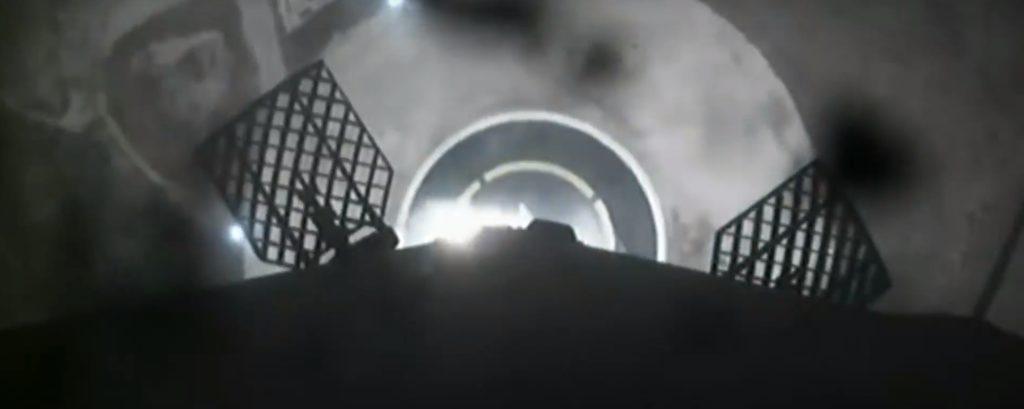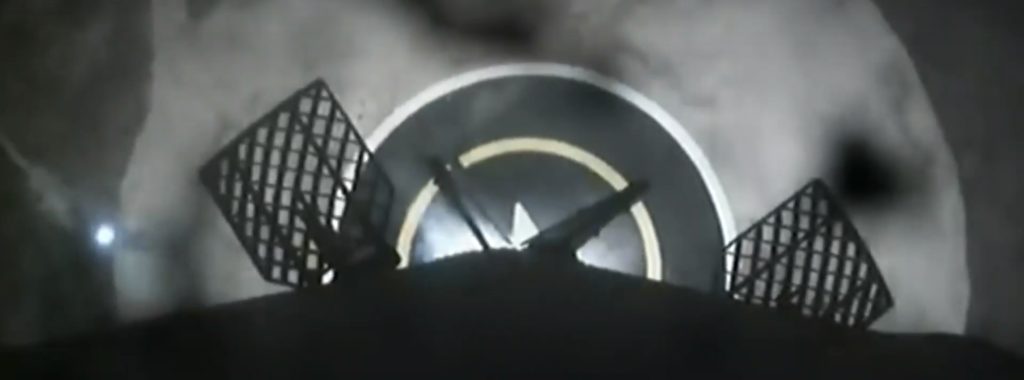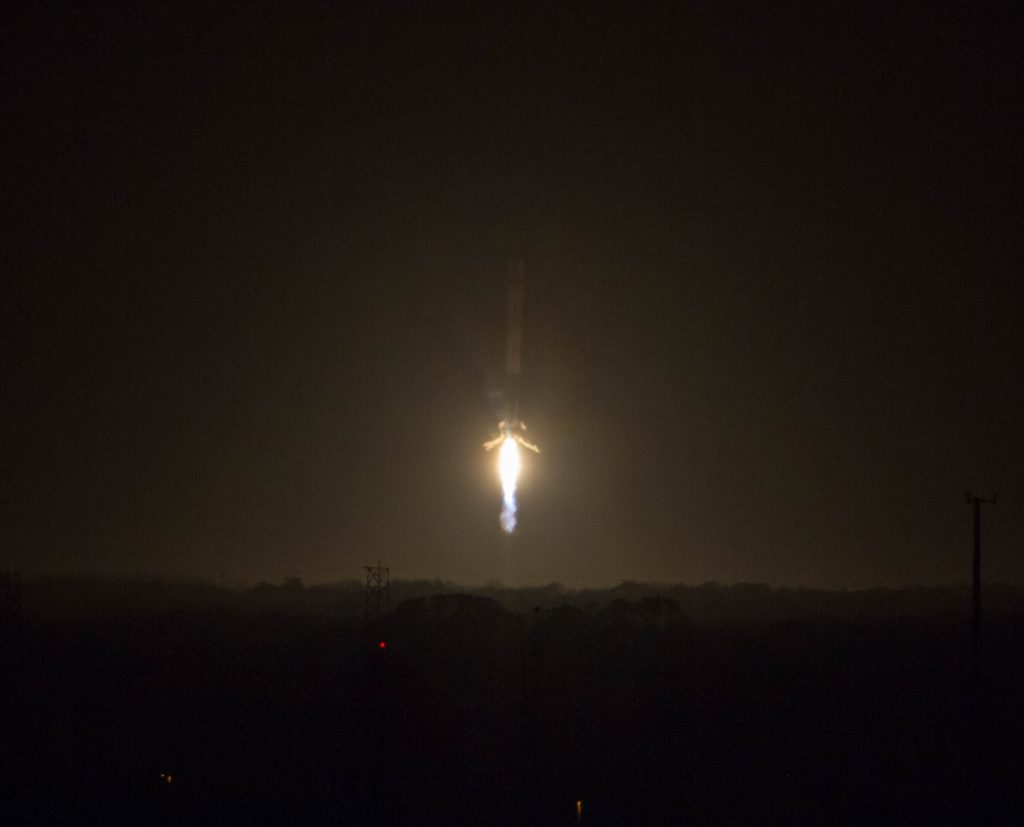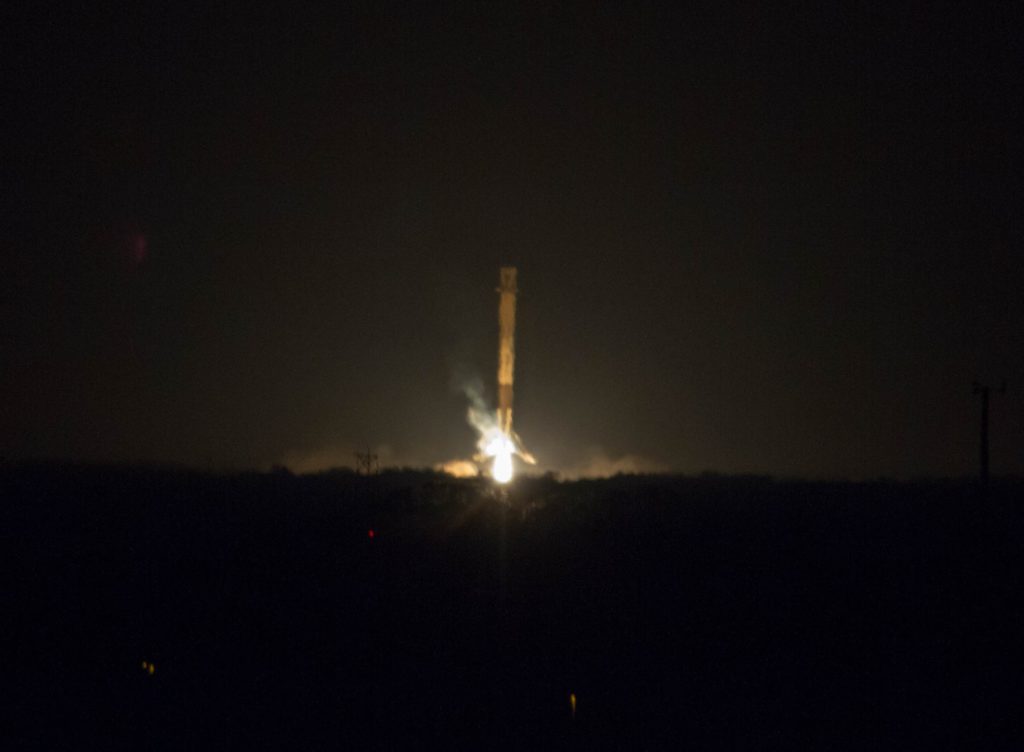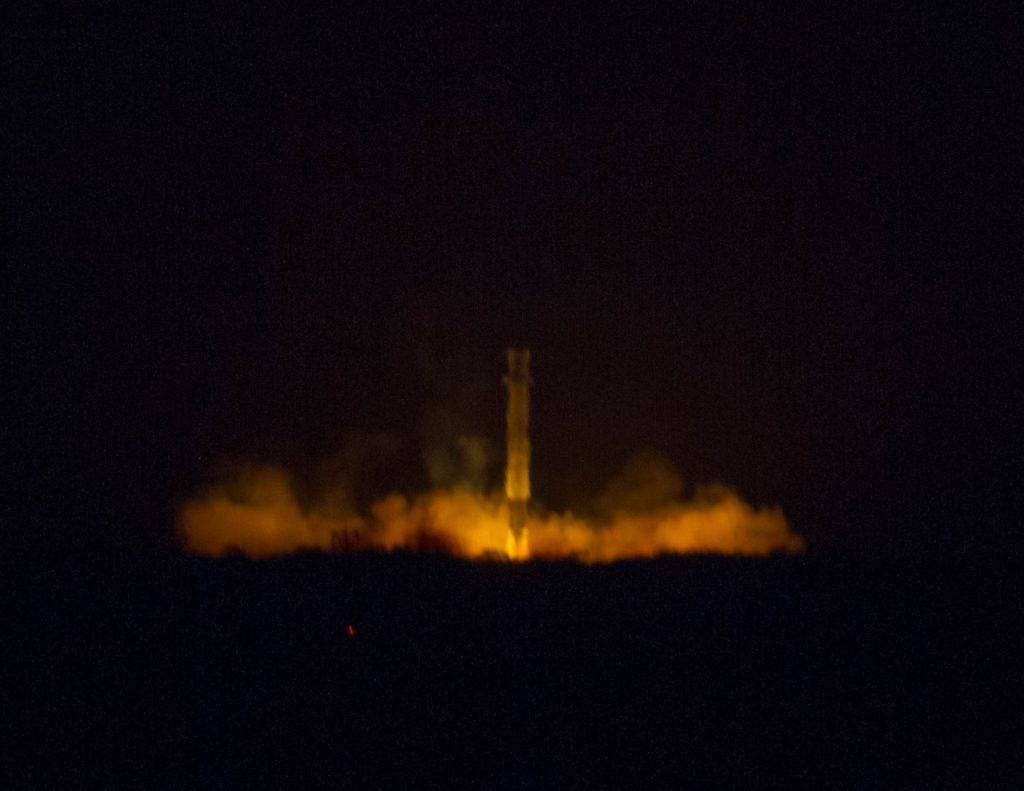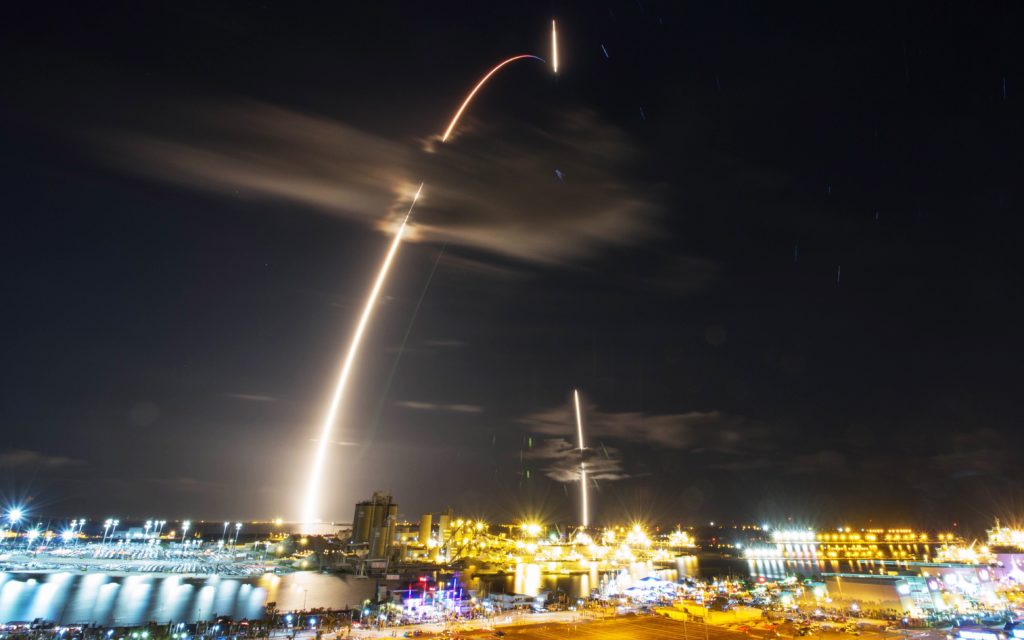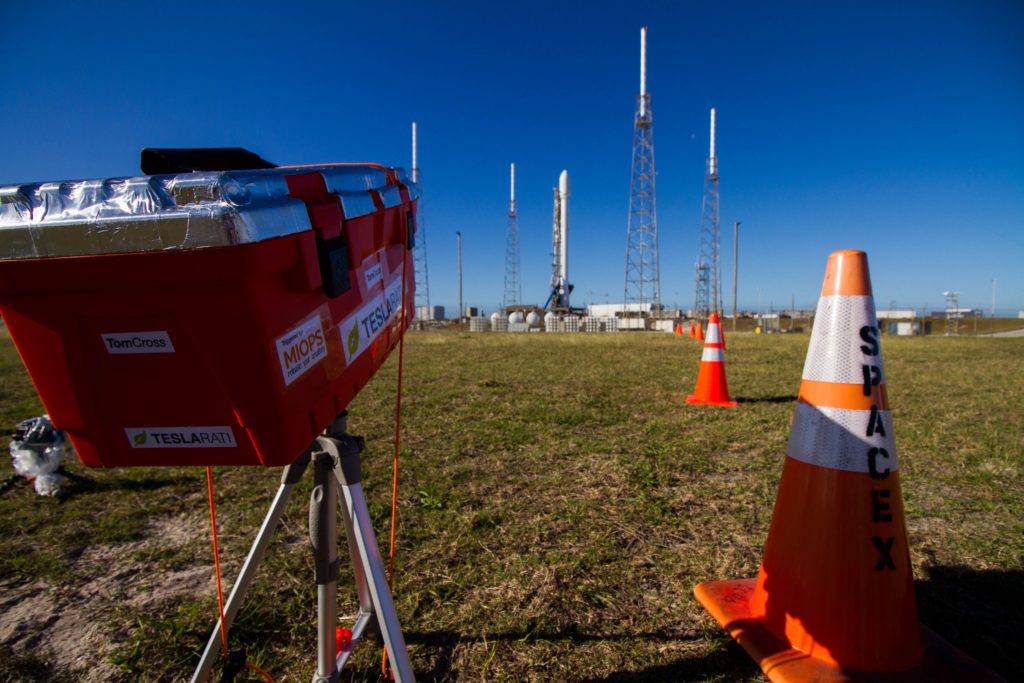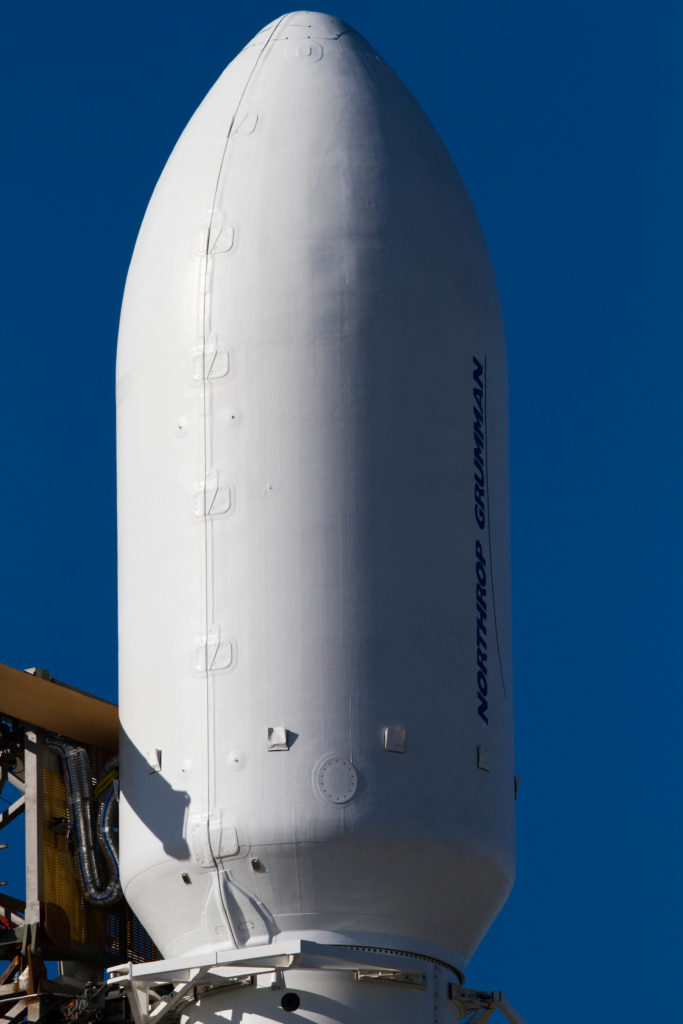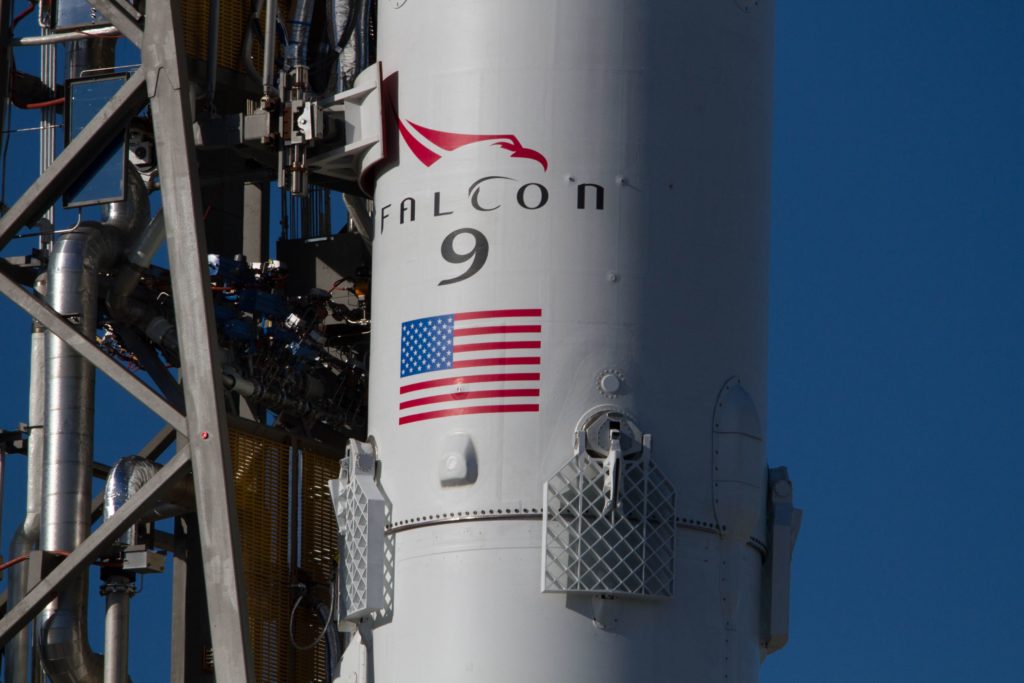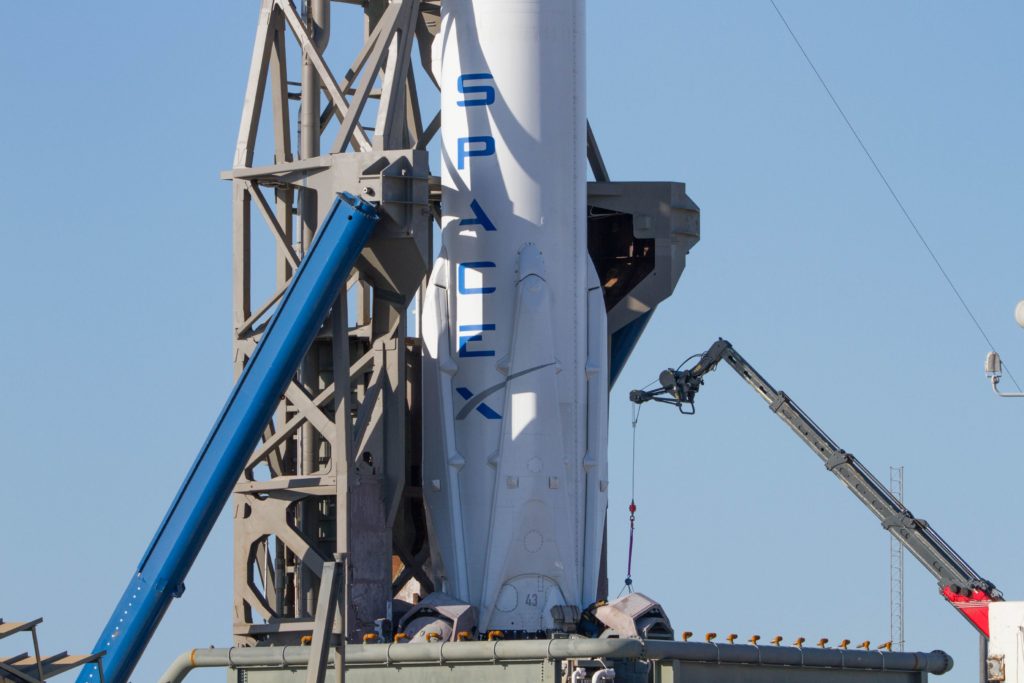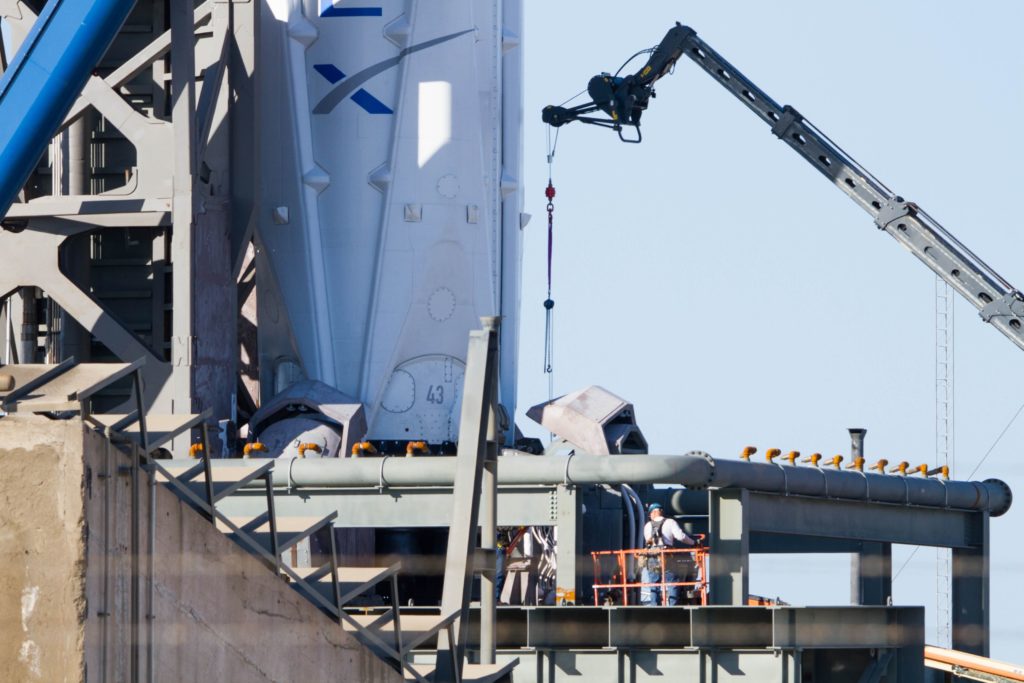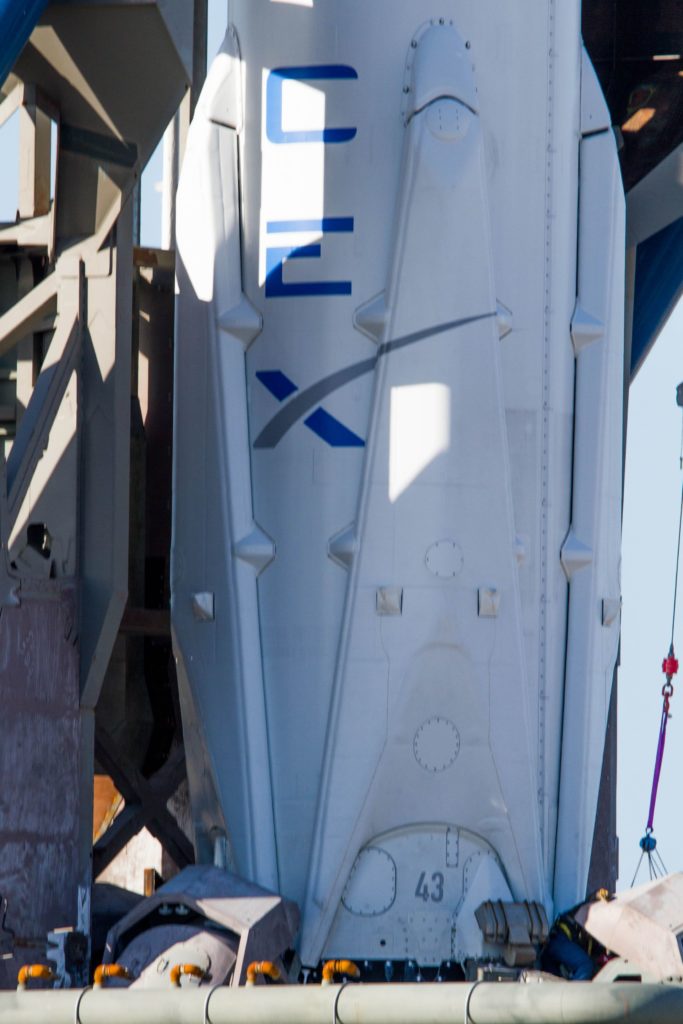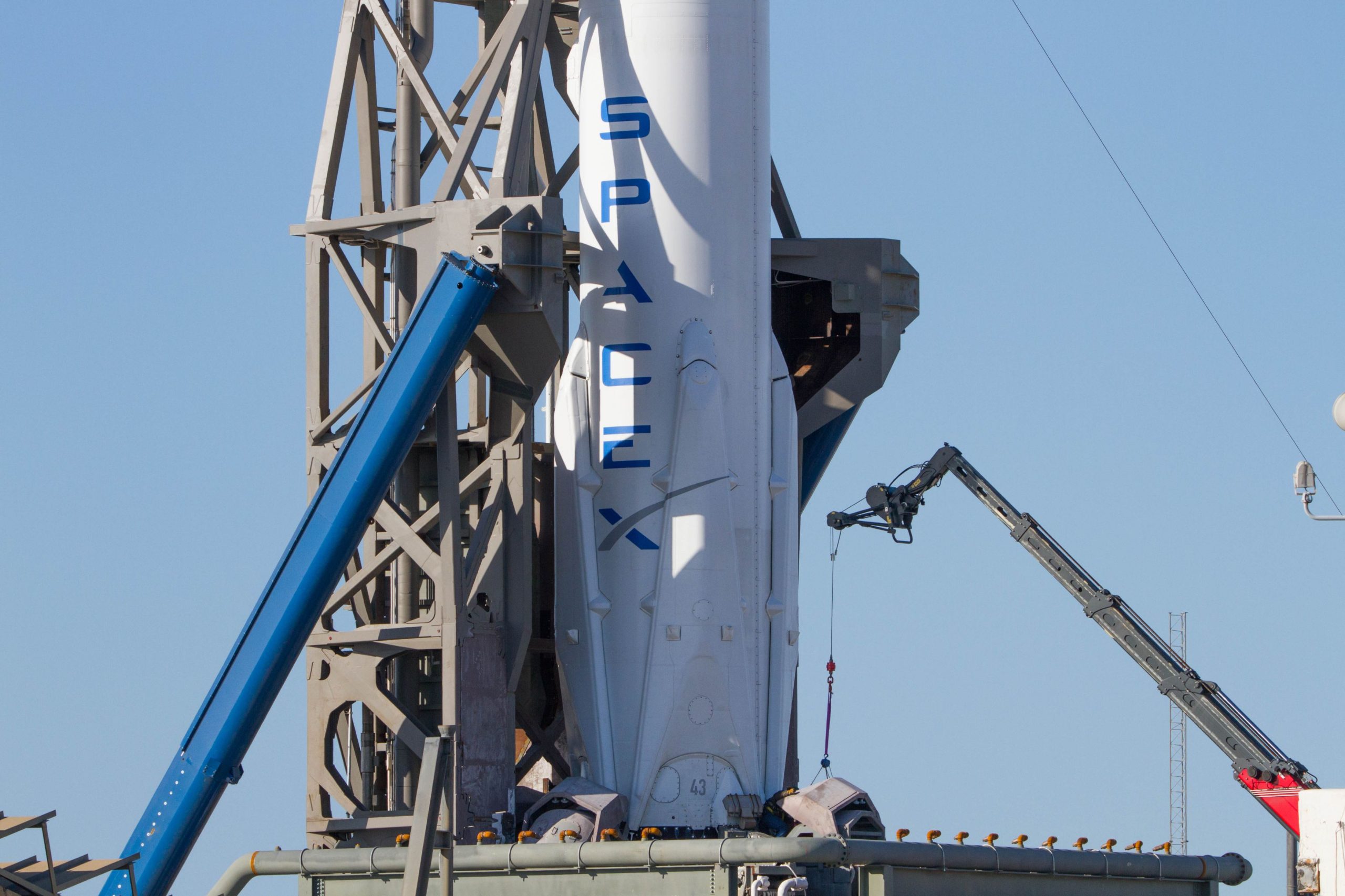
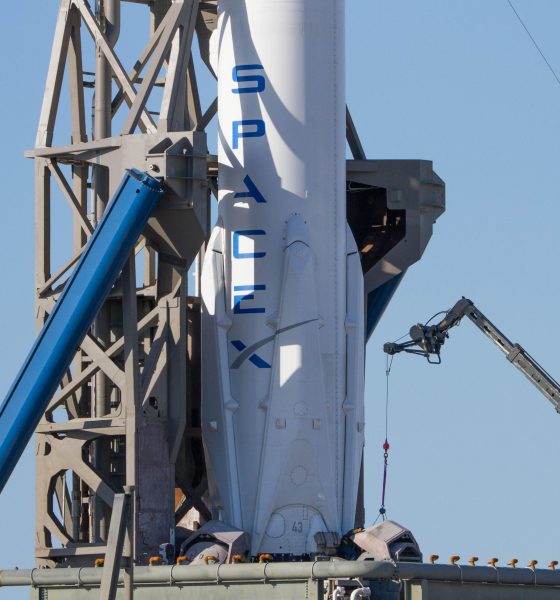
News
SpaceX’s first launch and landing of 2018 a success [gallery]
Update: While live coverage of the mission ended immediately after, SpaceX has nailed their first Falcon 9 booster recovery of the new year after Zuma’s Core 1043 returned to Landing Zone 1 at Cape Canaveral Air Force Station. The landed booster will undoubtedly see another flight (or two) in the near future after a relatively low-energy mission to low Earth orbit, decreasing the level of harsh heating experienced. While no additional information will likely be shared, it is assumed that Falcon 9’s second stage successfully inserted the Zuma payload into its desired orbit, ending SpaceX’s first mission of 2018.
Up next for SpaceX is an historic wet dress rehearsal and static fire of the inaugural Falcon Heavy, currently expected to occur sometime next week, with launch before the end of January.
- Nearing LZ-1…
- and Falcon 9 1043’s landing legs deploy before a successful landing. (SpaceX)
Teslarati’s launch photographer Tom Cross was also able to snag some great shots of the booster’s recovery at LZ-1.
- (Tom Cross/Teslarati)
- (Tom Cross/Teslarati)
- (Tom Cross/Teslarati)
- A composite long exposure showing the launch, landing, and second stage burns during the Zuma mission. (Tom Cross/Teslarati)
Aiming to lift off at 5pm PST/8pm EST later today, the Northrop Grumman-labelled Zuma mission is once again at the launch pad and ready to reach orbit aboard a SpaceX Falcon 9. Weather is currently 80% favorable for the mysterious mission, boding well for a launch sometime within the two hour window allotted to the satellite.
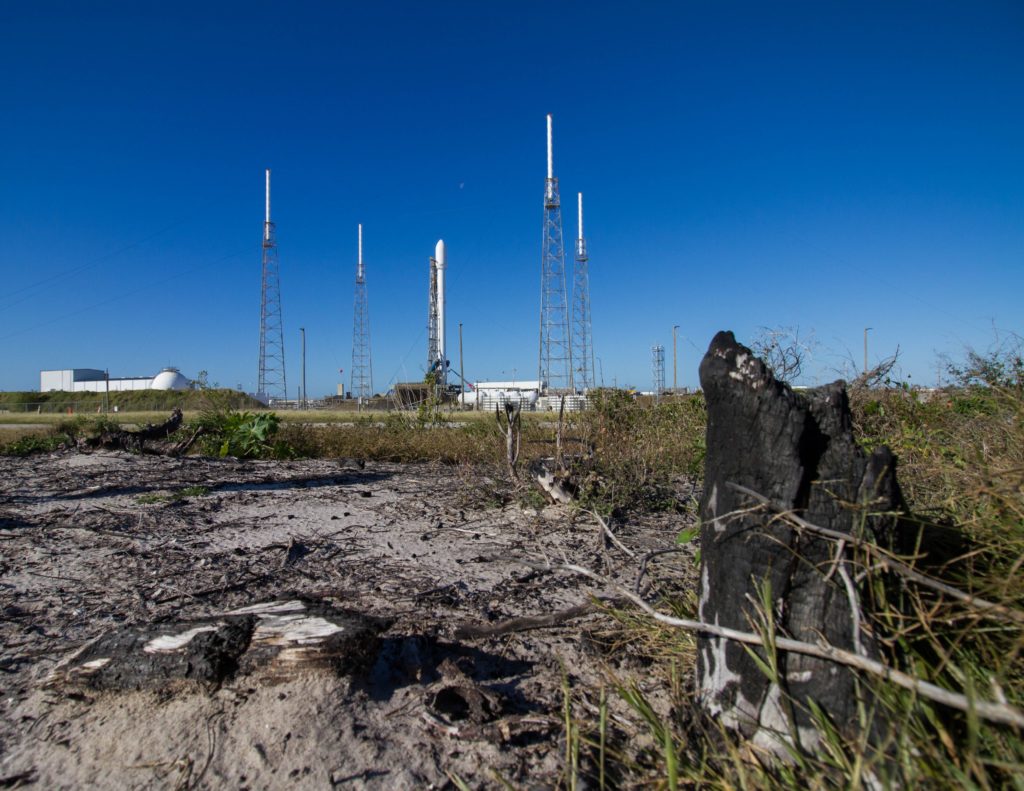
A charred log at SpaceX’s LC-40 pad serves as a reminder of their Amos-6 failure and the difficulties of orbital rocketry. (Tom Cross/Teslarati)
After issues were discovered in one of SpaceX’s payload fairings, Zuma was delayed from its original launch window in mid-November to January 2018, and was also moved from Launch Complex 39A to LC-40, just south of Kennedy Space Center. With its rescheduled ETA, SpaceX was looking to launch on January 4th, but a combination of undesirable upper-level winds and an opportunity to test the rocket and pad systems in frigid Florida weather conspired to delay the mission another handful of days to January 6 and finally January 7, today.
The apparently lightweight and highly secretive payload will mean that coverage of the payload and upper stage will sadly end immediately after the first stage separates. On the plus side, this means that the Falcon 9 booster’s return to Landing Zone 1 (LZ-1) will be the sole focus of SpaceX’s live coverage, likely culminating in some captivating footage, partially thanks to the beautiful, cloudless weather currently blessing Cape Canaveral. While the secretive nature of this launch will likely mean that no information will be publicly released about the mission of the Zuma satellite(s), a number of skilled astrophotographers will do their best to catalog and track the mission once it reaches orbit, just as they did with SpaceX’s intriguingly similar NROL-76 launch for the US National Reconnaissance Office in 2017.
- Tom Cross took a number of awesome photos earlier this morning (January 7) as Zuma prepares for launch. (Tom Cross/Teslarati)
- (Tom Cross/Teslarati)
- (Tom Cross/Teslarati)
- (Tom Cross/Teslarati)
- (Tom Cross/Teslarati)
- (Tom Cross/Teslarati)
In the meantime, our intrepid launch photographer Tom Cross has once again set up cameras to capture SpaceX’s delay-beset launch of Zuma, this time at the company’s newly reactivated LC-40 pad. With new, powerful lenses in tow, he’s been able to capture some gorgeous detail shots of SpaceX’s beautifully complex pad systems and rocket hardware. Follow along live on Instagram to get a behind-the-scenes view of SpaceX’s first launch of 2018.
SpaceX’s own official livestream can be found below.

News
Ford cancels all-electric F-150 Lightning, announces $19.5 billion in charges
“Rather than spending billions more on large EVs that now have no path to profitability, we are allocating that money into higher returning areas, more trucks and van hybrids, extended range electric vehicles, affordable EVs, and entirely new opportunities like energy storage.”
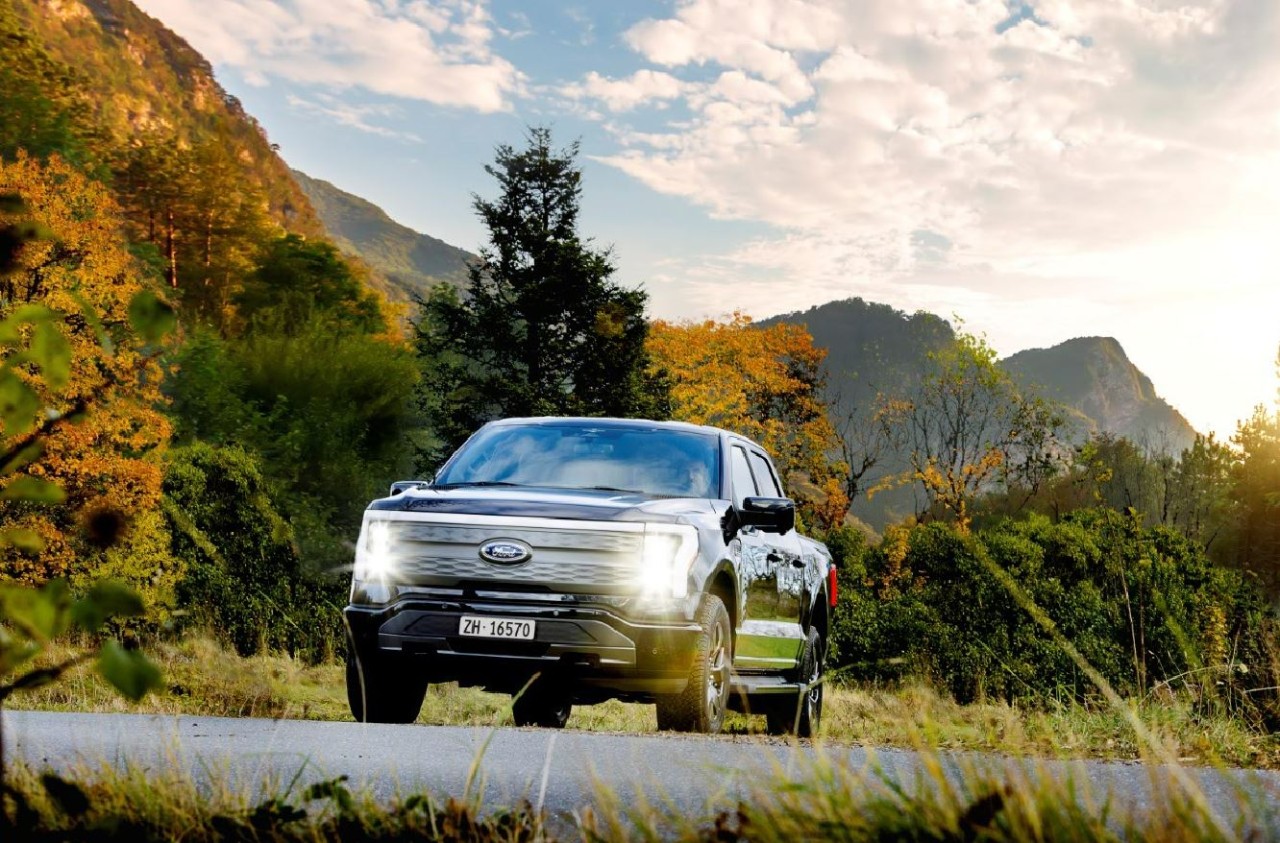
Ford is canceling the all-electric F-150 Lightning and also announced it would take a $19.5 billion charge as it aims to quickly restructure its strategy regarding electrification efforts, a massive blow for the Detroit-based company that was once one of the most gung-ho on transitioning to EVs.
The announcement comes as the writing on the wall seemed to get bolder and more identifiable. Ford was bleeding money in EVs and, although it had a lot of success with the all-electric Lightning, it is aiming to push its efforts elsewhere.
It will also restructure its entire strategy on EVs, and the Lightning is not the only vehicle getting the boot. The T3 pickup, a long-awaited vehicle that was developed in part of a skunkworks program, is also no longer in the company’s plans.
Instead of continuing on with its large EVs, it will now shift its focus to hybrids and “extended-range EVs,” which will have an onboard gasoline engine to increase traveling distance, according to the Wall Street Journal.
“Ford no longer plans to produce select larger electric vehicles where the business case has eroded due to lower-than-expected demand, high costs, and regulatory changes,” the company said in a statement.
🚨 Ford has announced it is discontinuing production of the F-150 Lightning, as it plans to report a charge of $19.5 billion in special items.
The Lightning will still be produced, but instead with a gas generator that will give it over 700 miles of range.
“Ford no longer… pic.twitter.com/ZttZ66SDHL
— TESLARATI (@Teslarati) December 15, 2025
While unfortunate, especially because the Lightning was a fantastic electric truck, Ford is ultimately a business, and a business needs to make money.
Ford has lost $13 billion on its EV business since 2023, and company executives are more than aware that they gave it plenty of time to flourish.
Andrew Frick, President of Ford, said:
“Rather than spending billions more on large EVs that now have no path to profitability, we are allocating that money into higher returning areas, more trucks and van hybrids, extended range electric vehicles, affordable EVs, and entirely new opportunities like energy storage.”
CEO Jim Farley also commented on the decision:
“Instead of plowing billions into the future knowing these large EVs will never make money, we are pivoting.”
Farley also said that the company now knows enough about the U.S. market “where we have a lot more certainty in this second inning.”
News
SpaceX shades airline for seeking contract with Amazon’s Starlink rival

SpaceX employees, including its CEO Elon Musk, shaded American Airlines on social media this past weekend due to the company’s reported talks with Amazon’s Starlink rival, Leo.
Starlink has been adopted by several airlines, including United Airlines, Qatar Airways, Hawaiian Airlines, WestJet, Air France, airBaltic, and others. It has gained notoriety as an extremely solid, dependable, and reliable option for airline travel, as traditional options frequently cause users to lose connection to the internet.
Many airlines have made the switch, while others continue to mull the options available to them. American Airlines is one of them.
A report from Bloomberg indicates the airline is thinking of going with a Starlink rival owned by Amazon, called Leo. It was previously referred to as Project Kuiper.
American CEO Robert Isom said (via Bloomberg):
“While there’s Starlink, there are other low-Earth-orbit satellite opportunities that we can look at. We’re making sure that American is going to have what our customers need.”
Isom also said American has been in touch with Amazon about installing Leo on its aircraft, but he would not reveal the status of any discussions with the company.
The report caught the attention of Michael Nicolls, the Vice President of Starlink Engineering at SpaceX, who said:
“Only fly on airlines with good connectivity… and only one source of good connectivity at the moment…”
CEO Elon Musk replied to Nicolls by stating that American Airlines risks losing “a lot of customers if their connectivity solution fails.”
American Airlines will lose a lot of customers if their connectivity solution fails
— Elon Musk (@elonmusk) December 14, 2025
There are over 8,000 Starlink satellites in orbit currently, offering internet coverage in over 150 countries and territories globally. SpaceX expands its array of satellites nearly every week with launches from California and Florida, aiming to offer internet access to everyone across the globe.
Currently, the company is focusing on expanding into new markets, such as Africa and Asia.
News
Tesla Model Y Standard stuns in new range test, besting its Premium siblings
Tesla’s newer vehicles have continued to meet or exceed their EPA estimates. This is a drastic change, as every 2018-2023 model year Tesla that Edmunds assessed did not meet its range estimates.

The Tesla Model Y Standard stunned in a new range test performed by automotive media outlet Edmunds, besting all of its Premium siblings that are more expensive and more luxurious in terms of features.
Testing showed the Model Y Standard exceeded its EPA-estimated range rating of 321 miles, as Edmunds said it is the “longest-range Model Y that we’ve ever put on our loop.” In the past, some vehicles have come up short in comparison with EPA ranges; for example, the Model Y’s previous generation vehicle had an EPA-estimated range of 330 miles, but only drove 310.
Additionally, the Launch Series Model Y, the first configuration to be built in the “Juniper” program, landed perfectly on the EPA’s range estimates at 327 miles.
It was also more efficient than Premium offerings, as it utilized just 22.8 kWh to go 100 miles. The Launch Series used 26.8 kWh to travel the same distance.
It is tested using Edmunds’ traditional EV range testing procedure, which follows a strict route of 60 percent city and 40 percent highway driving. The average speed throughout the trip is 40 MPH, and the car is required to stay within 5 MPH of all posted speed limits.
Each car is also put in its most efficient drive setting, and the climate is kept on auto at 72 degrees.
“All of this most accurately represents the real-world driving that owners do day to day,” the publication says.
With this procedure, testing is as consistent as it can get. Of course, there are other factors, like temperature and traffic density. However, one thing is important to note: Tesla’s newer vehicles have continued to meet or exceed their EPA estimates. This is a drastic change, as every 2018-2023 model year Tesla that Edmunds assessed did not meet its range estimates.
Tesla Model Y Standard vs. Tesla Model Y Premium
Tesla’s two Model Y levels both offer a great option for whichever fits your budget. However, when you sit in both cars, you will notice distinct differences between them.
The Premium definitely has a more luxurious feel, while the Standard is stripped of many of the more premium features, like Vegan Leather Interior, acoustic-lined glass, and a better sound system.
You can read our full review of the Model Y Standard below:
Tesla Model Y Standard Full Review: Is it worth the lower price?
